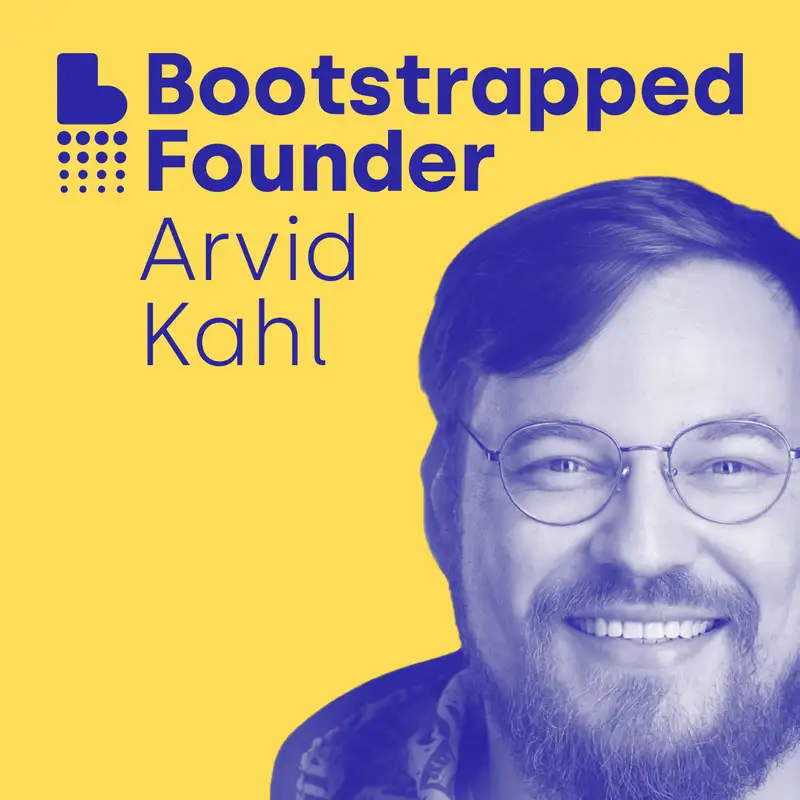387: Your API Documentation is Not For Developers Anymore
Download MP3Hey. It's Arvid, and this is the Bootstrap founder. Today, we're gonna talk about something fascinating that happened to me this week, something that made me completely rethink how we as software founders should approach API documentation in this wild new era of AI powered development. And this is not just about technology. It's about expectations.
Arvid:This episode is sponsored by Paddle.com. They are the merchant of record that has been responsible for allowing me to reach profitability just a few weeks ago. There truly are more. MOR. Merchant of record.
Arvid:Because their product allowed me to focus on building my own product that people actually wanna pay money for and enough to actually make it profitable too. And that's why Paddle does so much more for you. They deal with taxes and reaching out to customers when their payments fail. They charge people in their local currency if they want it and need it. All these things that I don't need to focus on so I can really be present for my customers and their needs.
Arvid:It's really amazing. Check out paddle.com to learn more. Now I had this really interesting experience with a customer of Podscan recently. They reached out saying that they were having trouble with integration into our API, and this is not unusual. Sometimes we get these requests and I help them out and check out what's going on, but what happened next with this person completely changed my perspective.
Arvid:I did what I usually do. I recorded a quick Loom video, and I walked them through the basics of how to create an API key and make that first request to show that it's working, and then how to search for a podcast and get its episode listings. Just a really simple five minute guide to get them started and connect with me as a founder. Their response? They said, when I watched it, something clicked.
Arvid:They made me happy. But then came the part that surprised me. You know, I'm not technical at all. That's what they said. I'm just using Claude and ChatGPT and Replit to build some integrations.
Arvid:And then they explained to me what they were actually building. So they were taking all these podcast episodes, the backlogs, the transcripts, feeding it into a what was it? Like, a vector database to then run an internal LLM on top of and ask questions about podcasts in their industry and what things should happen and what things they shouldn't do, like mining the data in these public conversations from many, many dozens of podcasts to all feed into one database and have an AI filter out information. And that stopped me in my tracks. Here was somebody with self proclaimed no technical background using AI tools to build what turned out to be a super sophisticated system, right?
Arvid:Download episodes from an API, put them into a database, build this LLM to generate insights and verify information, that's quite technical. And this got me thinking about just how dramatically things have changed in software. Traditionally, API documentation, like the stuff that people use to integrate with you, was written by technical people for technical people. That was really it. Right?
Arvid:The people reading it were developers who knew exactly what they wanted to do. They were kind of the bridge between my code as a product and their code and their product and very very technical very focused on a solution but now we're seeing this completely different kind of user here people who might not even know what an API key is who might never have even made an HTTP request before but who can use AI tools to build surprisingly complex solutions for their own needs, their own businesses. And this reminded me of an article that my friend Stefan showed me on Every.to called selfish software with the tagline making software can be fun again if you build for the user you're most eager to please yourself. It's about people building these tiny pieces of non generalizable software tools that just solve their own specific problems without needing to be scalable or sellable, just stuff for themselves, just software that works for them, for their business, for their projects. And here's where it gets interesting.
Arvid:These makers are not necessarily developers anymore. They're people with problems to solve, but now they don't need to tell a developer to solve it for them. They have AI as their development partner. And this creates a fascinating challenge for those of us building APIs and products that offer data on APIs. Our documentation now needs to serve two masters here.
Arvid:First, it needs to be technically precise enough for AI tools to generate working code, and it needs to be accessible enough for nontechnical users to understand the basics to even get started. Think about it, we've never had to do this before. Previously our documentation was already split but it was human readable docs for developers and machine readable specs like Swagger and OpenAPI for tools. But now we need something that works for both humans and AI while being accessible to non developers at the same time. It's not that machine developer split anymore.
Arvid:Now it's kind of a everybody and machines at the same time for both. It's not that easy, but there are ways to solve this. And Stripe, as usual, is ahead of the curve here. They've already started adapting their own documentation for this new reality. I really recommend checking out the Stripe docs.
Arvid:They're just well done in the first place, but you can see how they interact with LLMs because I bet their docs are being used to build AI powered things a lot at this point. So they offer an LLM dot TXT file for their whole API docs, essentially, like a markdown file that helps AI systems understand the API structure, the navigational structure of the documentation and the API that it actually documents. They have that file on every single page. And here comes the very interesting thing. They added a feature like copy your page as markdown for an LLM and direct links to open documentation in ChatGPT to each of their API doc pages.
Arvid:That is massive. Right? If one of the biggest buttons on the page is copy this for your AI system, then Stripe knows how people use their API docs and you likely should also know that people will use your API docs just like this. It's a first class citizen to just copy a page and paste it into ChatGPT for Stripe. So let's think about this.
Arvid:That is different, right? We used to read these things, but now we just push them into a system and expect it to create something for us. What does this mean for those of us building APIs now? I think here are a couple practical steps that I will try to implement that you might also wanna consider. First, we need more working examples on those pages.
Arvid:AI tools are particularly good inferring patterns from complete working code samples. And these examples should go from request to response, clearly explaining everything and being ready to be adapted for people's needs. I think this is much more important now than just having, like, the structure of the API in a Swagger document or something. That's already great, and that is something that I guess AI systems can use. It's great for them.
Arvid:They can already use it. But good examples are gonna make the rate of code generated that doesn't work go down, and it makes the first impression that somebody has with your API being something that works go up. And we need to be more explicit about anything along this line, about the basics in particular. We cannot assume knowledge of REST APIs or HTTP requests anymore or what an authorization header is or what a bearer token is, that kind of stuff. Any developer who works in this field knows this, but you have to remember that our users might just copy our entire documentation into ChatGPT to generate their integration code.
Arvid:And those are not necessarily developers. We have to think that this is the experience of nontechnical decision makers now, Because now a manager who wants to quickly see if our API fits their needs is not talking to the developer anymore. They expect to be able to click a button, have AI generate some test code, and see results immediately. So that's now an expectation of our API, the capacity of it and the documentation to facilitate somebody who has no idea to build code that works on first try. And I think this shift represents a fascinating democratization of technical implementation.
Arvid:It's really interesting to see that we're moving from a world where API integration was exclusively the domain of developers to one where anyone with a problem and access to AI tools can build solutions on our products. This is going to heavily impact customer service, obviously, but that's just reality in which we live. So for those of us running software businesses, especially ones with API first products, this is a challenge and an opportunity. The challenge is adapting our documentation, our onboarding and customer service to this new reality, but the opportunity, a whole new audience of potential users who previously would not even have considered using our APIs or tell anybody to try. Now they get to.
Arvid:Now some manager somewhere, some CEO, some CTO gets to play with this immediately and they can make a choice: If this works, we're going to buy the $5,000 monthly plan. This is now a possibility that starts on your API documentation page. I think this is just the beginning. As AI tools become more sophisticated and accessible, we will need to keep evolving how we present our technical products to the world. The winners will be those of us who make their APIs not just powerful and useful, but accessible to this new wave of AI assisted builders.
Arvid:From day one, from the first time they read your page, they should be able to build something cool on top of it and have AI build it for them. I didn't even talk about things like MCPs, adding this additional layer, the USB of machines talking to other machines, this plug in layer for LLMs to be able to use your API. That is probably a topic for another day. But even just the documentation is a place where we can make it easier for AIs to use a product in a way that actually creates revenue. If you are working on API docs or you're building products with APIs and you wanna go into this, I would love to hear your thoughts on this.
Arvid:And are you adapting to this new reality, or are you just providing something for people to get started? Let me know. And that's it for today. Thank you for listening to the Bootswift founder. You can find me on Twitter at avid kahl, a I v I d k a h l.
Arvid:And if you wanna support me in this show, please share Podscan.fm with your professional peers and those who you think will benefit from tracking mentions of brands, businesses, and their names on podcasts out there. Podscan is a near real time podcast database with a stellar API, well documented too, so please share the word with those who need to stay on top of the podcasting ecosystem. Thank you so much for listening. Have a wonderful day, and bye bye.
Creators and Guests

